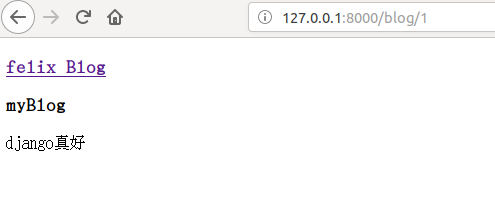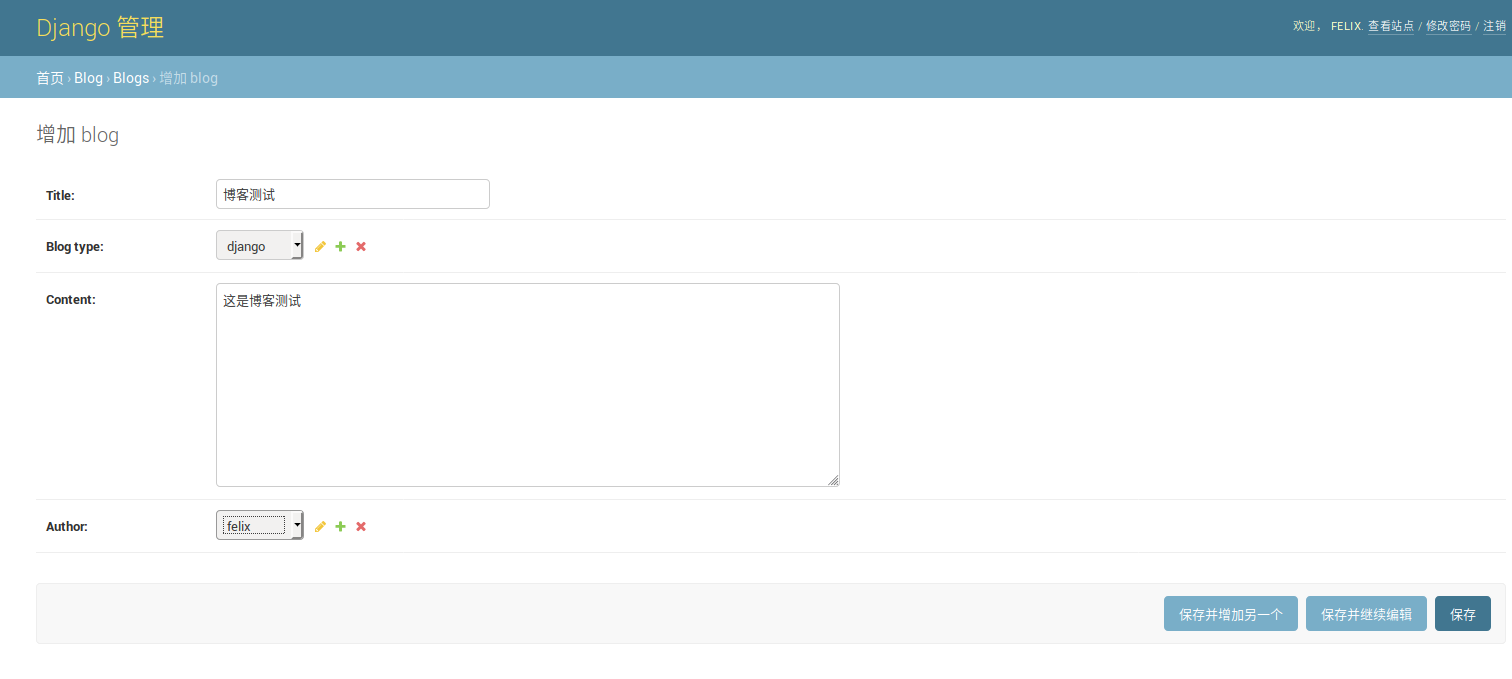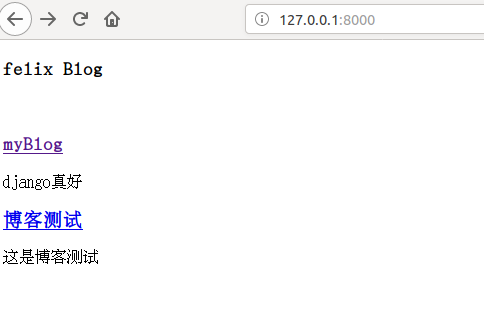搭建自己的部落格(三):簡單搭建首頁和詳情頁
阿新 • • 發佈:2018-11-04
上一篇我們建立了部落格表和標籤表以及超級使用者,那如何將建立的部落格通過網頁顯示出來呢?‘我們簡單的建立首頁和詳情頁。
1、新建html介面
首先建立在blog app下建立一個templates資料夾,這個資料夾用來放置前端頁面,注意資料夾名字必須是templates。
建立blog_list.html 檔案用來放部落格列表。建立blog_detail.html檔案用來放部落格詳情。

<!DOCTYPE html> <html lang="en"> <head> <meta charset="UTF-8">blog_list.html<title>felix Blog</title> </head> <body> <div> <h3>felix Blog</h3> </div> <br/> </body> </html>

<!DOCTYPE html> <html lang="en"> <head> <meta charset="UTF-8"> <titleblog_detail.html>部落格詳情</title> </head> <body> </body> </html>
2、建立是檢視函式
開啟blog下的views.py

from django.shortcuts import render_to_response, get_object_or_404 from .models import Blog # Create your views here. # 部落格列表 def blog_list(requests): contextviews.py= { 'blogs': Blog.objects.all() } return render_to_response('blog_list.html', context) # 部落格詳情 def blog_detail(requests, blog_pk): context = { 'blog': get_object_or_404(Blog, pk=blog_pk) } return render_to_response('blog_detail.html', context)
這裡檢視函式中傳遞了引數給前端,所以得修改一下之前寫的前端程式碼,渲染檢視函式傳遞過來的資料。

<!DOCTYPE html> <html lang="en"> <head> <meta charset="UTF-8"> <title>felix Blog</title> </head> <body> <div> <h3>felix Blog</h3> </div> <br/> {% for blog in blogs %} <a href="{% url 'blog_detail' blog.pk %}"><h3>{{ blog.title }}</h3></a> <p>{{ blog.content }}</p> {% endfor %} </body> </html>blog_list.html

<!DOCTYPE html> <html lang="en"> <head> <meta charset="UTF-8"> <title>{{ blog.title }}</title> </head> <body> <a href="{% url 'home' %}"> <div> <h3>felix Blog</h3> </div> </a> <h3>{{ blog.title }}</h3> <p>{{ blog.content }}</p> </body> </html>blog_detail
3、建立url訪問路徑
修改全域性的myblog下的urls.py

"""myblog URL Configuration The `urlpatterns` list routes URLs to views. For more information please see: https://docs.djangoproject.com/en/2.1/topics/http/urls/ Examples: Function views 1. Add an import: from my_app import views 2. Add a URL to urlpatterns: path('', views.home, name='home') Class-based views 1. Add an import: from other_app.views import Home 2. Add a URL to urlpatterns: path('', Home.as_view(), name='home') Including another URLconf 1. Import the include() function: from django.urls import include, path 2. Add a URL to urlpatterns: path('blog/', include('blog.urls')) """ from django.contrib import admin from django.urls import path, include from blog.views import blog_list urlpatterns = [ path('', blog_list, name='home'), # 主頁路徑 path('admin/', admin.site.urls), path('blog/', include('blog.urls')), # 部落格app路徑 ]myblog_urls.py
在blog app下建立url路徑,新建urls.py

from django.urls import path from . import views urlpatterns = [ path('<int:blog_pk>',views.blog_detail,name='blog_detail') ]blog_urls.py
4、啟動服務,執行測試
此時我們在瀏覽器輸入:http://127.0.0.1:8000/

點選myBlog,跳轉到詳情:

如果沒有資料的話,我們可以進入admin後臺管理系統建立。

然後重新整理首頁:

就出現了剛才建立的部落格!

